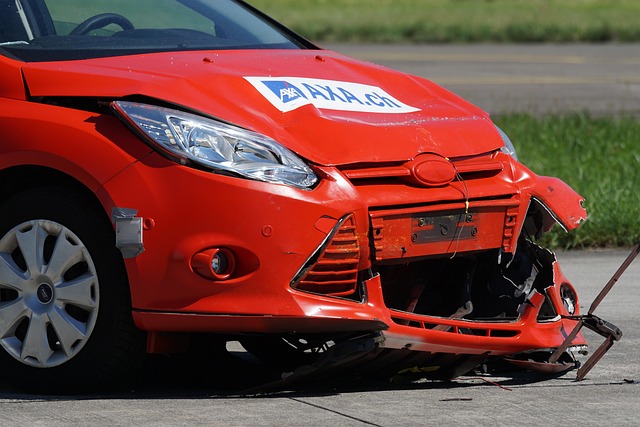Car insurance is crucial for new drivers, offering financial protection against road hazards with various coverage types like liability, collision, comprehensive, and PIP. Rates are influenced by age, experience, location, vehicle type, and safety features. New drivers should compare quotes, manage deductibles, maintain a clean record, and understand policy terms to find the best fit while navigating claims effectively.
Introducing our comprehensive guide to car insurance for new drivers. In this article, we demystify the essentials of auto coverage, breaking down complex concepts into understandable terms. We explore factors influencing premiums, providing insights to help young drivers make informed choices. From liability to collision, we detail various coverage options tailored to specific needs. Additionally, we offer strategies to secure the best deals and highlight common mistakes to avoid. Learn how to navigate claims efficiently and gain valuable knowledge on every aspect of car insurance.
Understanding Car Insurance Basics for New Drivers

Car insurance is a necessary and crucial aspect for new drivers to grasp before hitting the road. It serves as a financial safety net, protecting against unexpected events like accidents or theft. For beginners, understanding coverage types—like liability, collision, and comprehensive—is essential. These options vary in cost and scope, so comparing quotes from different providers is a smart move.
New drivers should also familiarize themselves with deductibles, which are the amounts they pay out-of-pocket before insurance kicks in. Lowering deductibles increases premiums but offers peace of mind. Additionally, maintaining a clean driving record and keeping up with safety inspections can significantly lower car insurance costs over time.
Factors Affecting Car Insurance Premiums

Car insurance premiums are influenced by several key factors that new drivers should be aware of before purchasing a policy. One of the primary considerations is age and driving experience; as new drivers lack established records, they often face higher rates compared to more experienced motorists. Additionally, location plays a significant role; areas with higher accident rates or dense urban populations typically result in increased premiums due to perceived greater risks.
Vehicle type and safety features are also critical factors. New drivers who opt for high-performance or luxury cars may encounter higher costs as these vehicles are more prone to damage and have elevated replacement values. Conversely, insuring a car equipped with advanced safety systems can lead to discounts, as these features demonstrate a commitment to driver and passenger safety.
Types of Car Insurance Coverage Options

When it comes to car insurance for new drivers, understanding your coverage options is paramount. The most common types include liability, collision, comprehensive, and personal injury protection (PIP). Liability insures against damages caused to others in an accident, while collision covers repairs or replacements to your own vehicle if it’s damaged. Comprehensive offers protection against non-collision related incidents like theft, vandalism, or natural disasters. PIP, on the other hand, focuses on medical expenses for you and your passengers, regardless of fault.
Each type of coverage serves a distinct purpose, catering to different risk profiles and needs. New drivers often opt for a combination that includes liability, collision (if they have a high-risk vehicle), comprehensive, and PIP to ensure they’re adequately protected on the road. It’s crucial to carefully consider these options and potentially compare quotes from various providers to find the best fit within your budget.
How to Get the Best Deal on Car Insurance

Securing the best deal on car insurance as a new driver involves several strategic steps. Firstly, compare quotes from multiple insurers to gain an understanding of market rates and available discounts. Many companies offer significant reductions for safe driving records, good students, or bundling policies with other services like home insurance. Be sure to inquire about these options when requesting quotes.
Additionally, maintain a clean driving record as it significantly influences premium costs. Avoid speeding tickets and at-fault accidents, which can elevate rates substantially. Consider raising your deductible, but ensure you can comfortably afford the higher out-of-pocket expense in case of a claim. Lastly, review policy terms and conditions meticulously to avoid unnecessary coverage gaps or additional charges.
Common Mistakes New Drivers Make with Insurance

Many new drivers, excited yet nervous about their newfound freedom on the road, often make mistakes when it comes to car insurance. One common error is underestimating the importance of having adequate coverage. They might opt for the cheapest policy available, assuming it will be enough protection, but this can leave them significantly underrepresented in case of an accident. Car insurance isn’t just about meeting legal requirements; it’s a safety net that can help manage financial losses and protect you from bearing the full cost of repairs or legal fees after an incident.
Another mistake is not understanding the different types of coverage and their benefits. New drivers might select a policy without comprehending what each component covers, leading to potential loopholes in protection. It’s crucial to read and understand the policy document, asking for clarification where needed. Remember, insurance is a personal choice; tailoring it to your specific needs ensures you’re not paying for unnecessary features while also receiving comprehensive protection when required.
Navigating Claims and What to Expect

Navigating claims process is a crucial aspect of car insurance for new drivers. When an accident occurs, understanding your coverage and what to expect can help alleviate stress during an already challenging situation. Firstly, review your policy documents carefully to comprehend the types of coverage you have and the specific terms and conditions attached. Car insurance policies typically include comprehensive, collision, liability, and medical payments coverage, each with its own implications for claims.
During a claim, be prepared to provide detailed information about the incident, including dates, times, locations, and any witnesses present. Keep records of all communication with your insurance provider, as well as any repair estimates or bills related to the accident. What to expect varies depending on the severity of the incident and your specific policy, but generally, you can anticipate a thorough investigation by the insurer, potential adjustments to your premium based on fault and claims history, and eventual reimbursement for eligible expenses up to the limits of your coverage.
